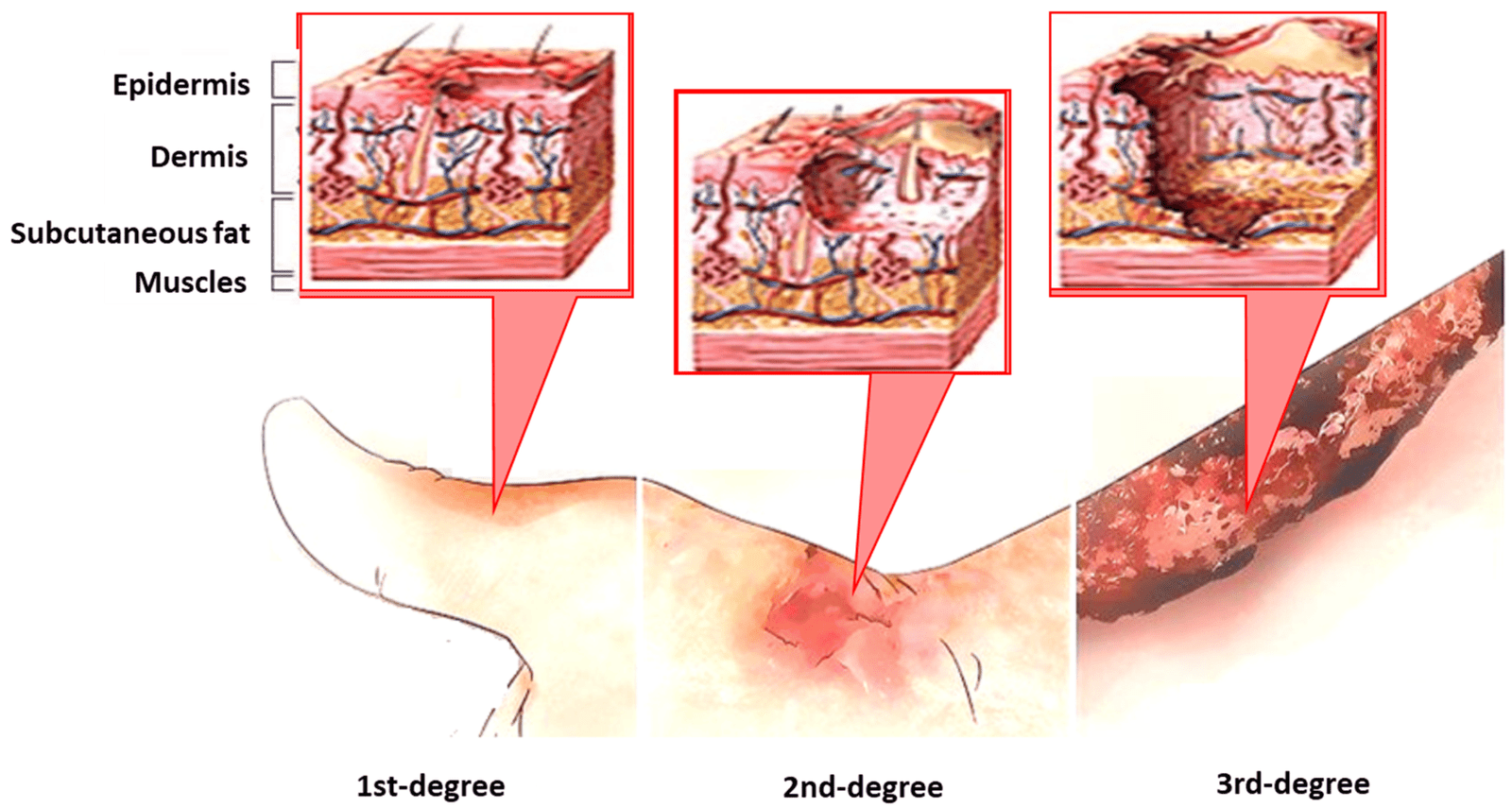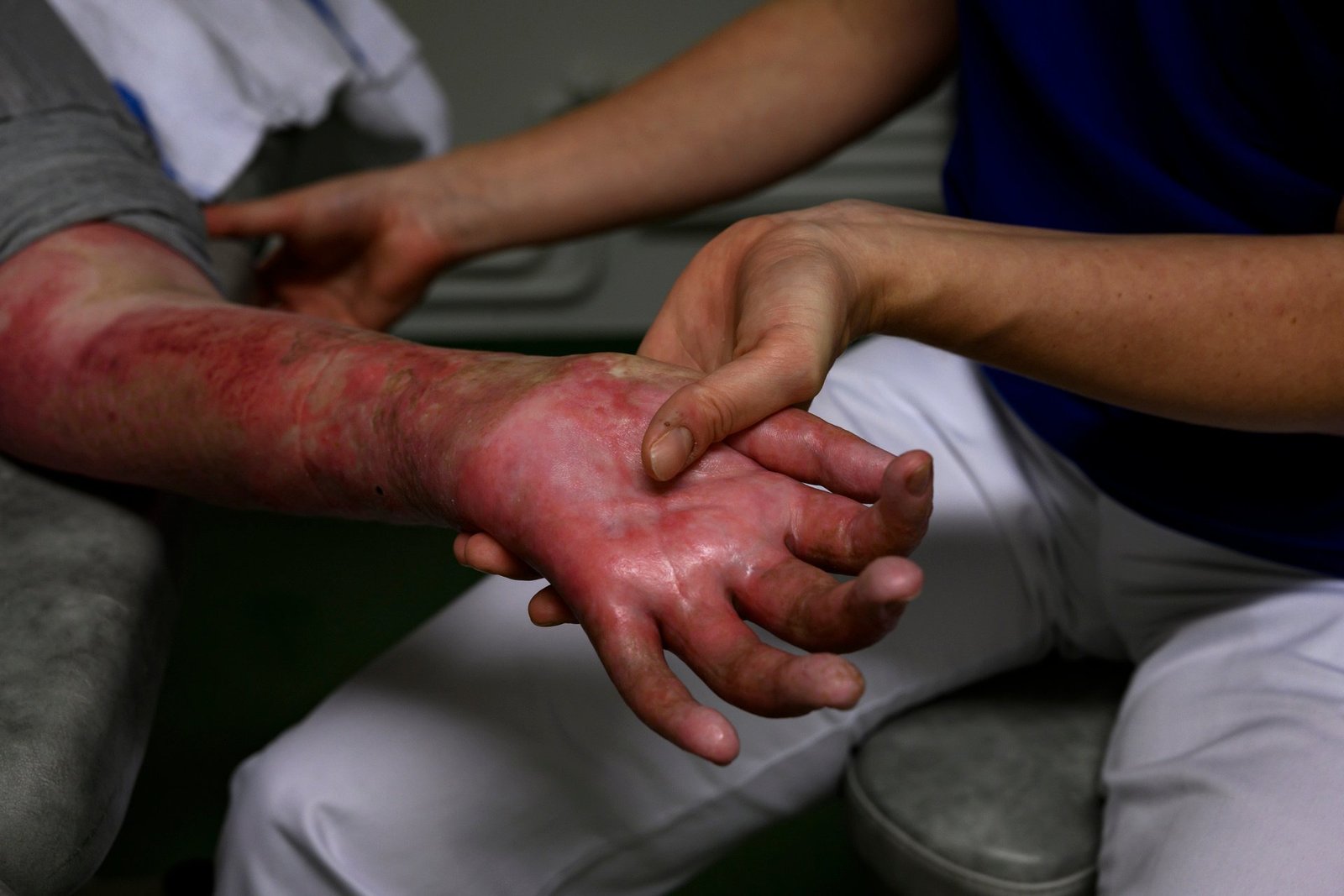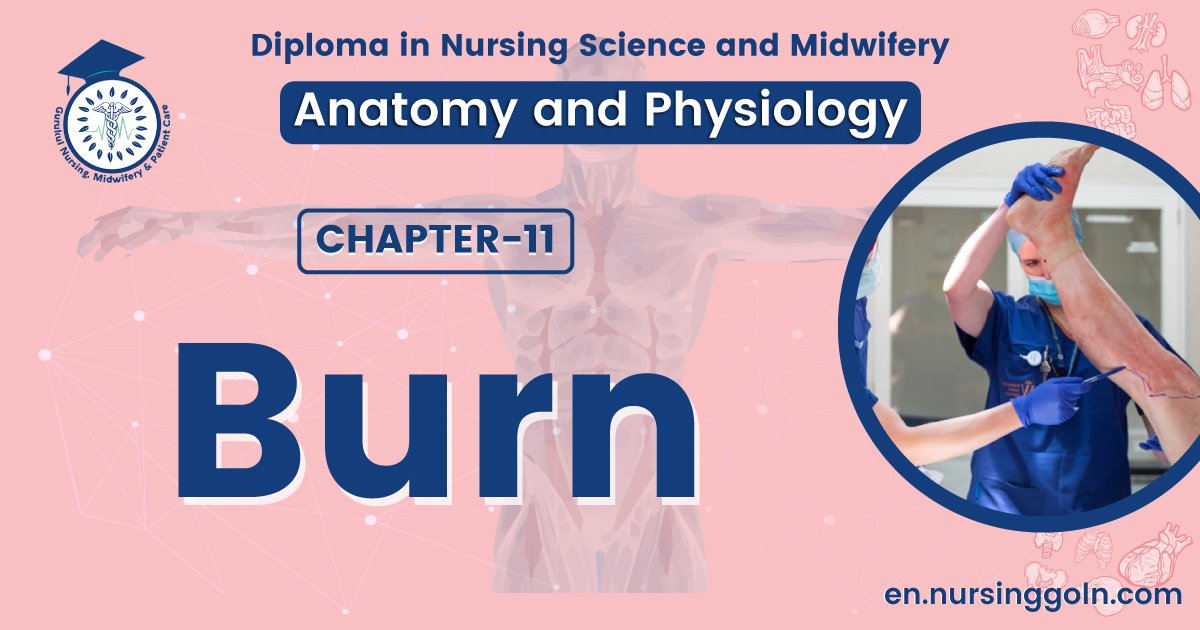Concept about Burn-The course is designed for the basic understanding of anatomical structures and physiological functions of human body, musculoskeletal system, digestive system, respiratory system; cardiovascular system; urinary system, endocrine system, reproductive system, nervous system, hematologic system, sensory organs, integumentary system, and immune system.The aim of the course is to acquire knowledge and skills regarding anatomy and physiology.

Concept about Burn
A burn is tissue damage caused by excessive heat, electricity, radioactivity, or corrosive chemicals that denature (destroy) the proteins in the skin cells. Burns destroy some of the skin’s important contributions to homeostasis-protection against microbial invasion and dehydration, and regulation of body temperature.
Burns are graded according to their severity:
1. A first-degree burn
involves only the epidermis. It is characterized by mild pain and erythema (redness) but no blisters. Skin functions remain intact.
- Immediate flushing with cold water may lessen the pain and damage caused by a first- degree burn.
- Generally, healing of a firstdegree burn will occur in 3 to 6 days and may be accompanied by flaking or peeling. One example of a first-degree burn is mild sunburn.

2. A second-degree burn:
Destroys the epidermis and part of the dermis. Some skin functions are lost. In a second degree burn, redness, blister formation, edema, and pain result. In a blister the epidermis separates from the dermis due to the accumulation of tissue fluid between them. Associated structures, such as hair follicles, sebaceous glands, and sweat glands, usually are not injured.
- If there is no infection, second-degree burns heal without skin grafting in about 3 to 4 weeks, but scarring may result.
- First-and second-degree burns are collectively referred to as partial-thickness burns.

3. A third-degree burn or full-thickness burn:
Destroys the epidermis, dermis, and subcutaneous layer. Most skin functions are lost. Such burns vary in appearance from marble-white to mahogany colored to charred, dry wounds. There is marked edema, and the burned region is numb and no pain because sensory nerve endings have been destroyed.
- Regeneration occurs slowly, and much granulation tissue forms before being covered by epithelium.
- Skin grafting may be required to promote healing and to minimize scarring
Read more:
